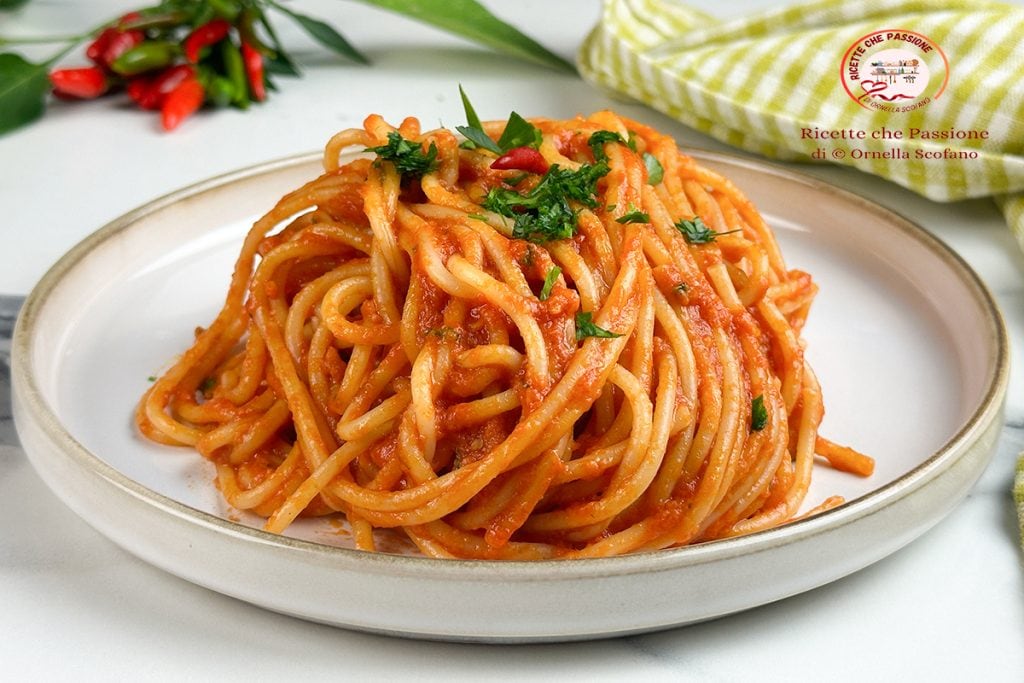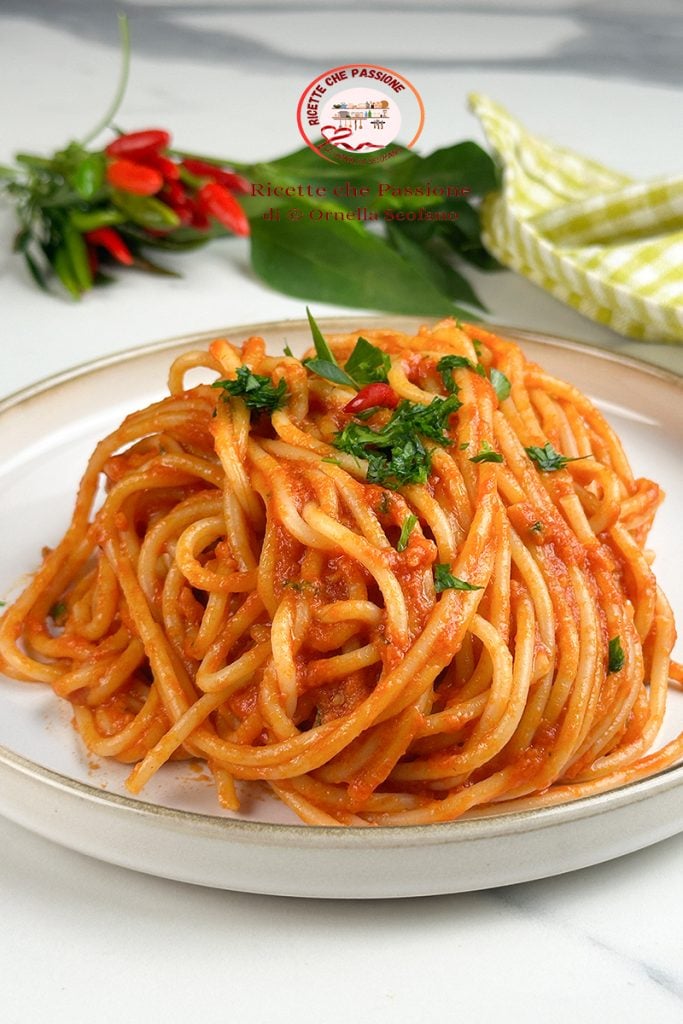Spaghetti at the Court of Assizes, a dish with a really strange name, was created in Calabria in 1958. Surprisingly, the name was not given by the chef who prepared it the first time, but by a judge who found himself dining late one evening at Marina di Gioiosa Jonica with Chef Gaetano. Due to the late hour and the closing of the restaurant’s kitchen, the chef quickly invented a dish with what is always in the kitchen: garlic, oil, fresh chili pepper, parsley, tomato purée or fresh tomatoes, and plenty of cheese to temper the spiciness of the chili, the true star of this dish, which as is known, is never missing in Calabrian kitchens. After having seconds, the judge dubbed the dish spaghetti at the court of assizes because the spiciness of the chili was anything but lenient, much like the cases in the Court of Assizes which allowed no further appeal. If you like spicy food, this is the dish for you, and if you don’t, I still recommend trying it, using less chili or a milder version, as there are many different types of chili peppers with varying levels of heat.

- Difficulty: Very easy
- Cost: Inexpensive
- Preparation time: 20 Minutes
- Portions: 2
- Cooking methods: Stovetop
- Cuisine: Italian
- Seasonality: All seasons
Ingredients for spaghetti at the court of assizes
- 7 oz thick spaghetti
- 1 cup tomato purée
- 3 chili peppers
- 2 garlic cloves
- 1.5 oz grana or parmesan cheese
- to taste olive oil
- to taste salt
- to taste parsley
Tools
- 1 Pot
- 1 Pan
- 1 Cutting board
- 1 Garlic press
- 1 Knife
- 1 Colander
Steps to prepare spaghetti at the court of assizes

Bring a pot of water to a boil for the pasta, add the spaghetti, ideally thick or square spaghetti, such as guitar-style spaghetti. Salt the water and cook until al dente, while preparing the sauce in the pan.
Add some olive oil to a pan, add finely chopped garlic and chili pepper, and let it sauté over low heat without burning the garlic. It should only become fragrant, not too golden; otherwise, it will burn and taste bitter.
At this point, add the tomato purée, a little salt, and cover to prevent splatters. Keep the flame lively, and if the sauce isn’t thick enough, add a tablespoon of tomato paste.
Meanwhile, chop some parsley on the cutting board with a smooth-edged knife.
Meanwhile, the pasta will be cooked; drain it while saving some cooking water. Toss the pasta in the sauce on high heat, adding a little cooking water if necessary. Finally, add the cheese; if you like, you can mix parmesan with pecorino, and blend well, then off the heat, add parsley and serve. At the chef’s discretion, both parmesan or grana and pecorino can be used.
An excellent variation is ‘nduja, to be added to the sauce during cooking instead of chili.

